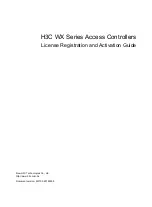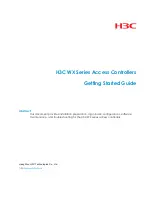
Author – D. Rehe Feb 2020
1. Set the LIM potentiometer(POT) fully clockwise along with the Trip POT.
2. Set the FBG POT to approximately half way.
3. Connect a current clamp meter to the load.
4. With the control input set to maximum, gradually turn the LIM Potentiometer
clockwise until the required current limit value is reached. The LIM LED will be lit
while current limit is active.
4.B Unstable Output
If the output is oscillating while current limit is active, you need to turn the FBG POT fully
clockwise, and then gradually turn anticlockwise until the output is stable.
5. Power Limit (PW Option)
1. Set the LIM potentiometer(POT) fully clockwise along with the Trip POT.
2. Set the FBG POT to approximately half way.
3. Connect a current clamp meter to the load. If a voltage connection is available
connect the voltage terminals to the load.
4. With the control input set to maximum, gradually turn the LIM Potentiometer
clockwise until the required power limit value is reached. The LIM LED will be lit
while power limit is active.
Note:
The PW option (Power limit) takes the voltage into account when limiting the
output, however with only the C option (Current Limit) it only limits by current. Th reason
is due to some applications with small elements or sensitive applications, where there is
no temperature feedback loop, as in furnaces for example, as the mains voltage
fluctuates, from +10% to -15%, the output power fluctuates. With PW option is measures
the voltage and adjusts the input demand signal as necessary.
5.B Unstable Output
If the output is oscillating while current limit is active, you need to turn the FBG POT fully
clockwise, and then gradually turn anticlockwise until the output is stable.
6. Current Trip
1. Turn the trip POT fully clockwise.
2. With the control input set to maximum, gradually turn the TRIP Potentiometer
anti-clockwise until the required current limit value is reached. The Trip LED is lit,
and the output of the controller turns off, while the enable LED also turns off. You
are now at the maximum output of the controller.
3. Turn the TRIP POT clockwise one or two turns clockwise.
Nuisance Trip
If you are experiencing nuisance trip, turn the TRIP a further half to one turn clockwise.
Trip Relay Output

























